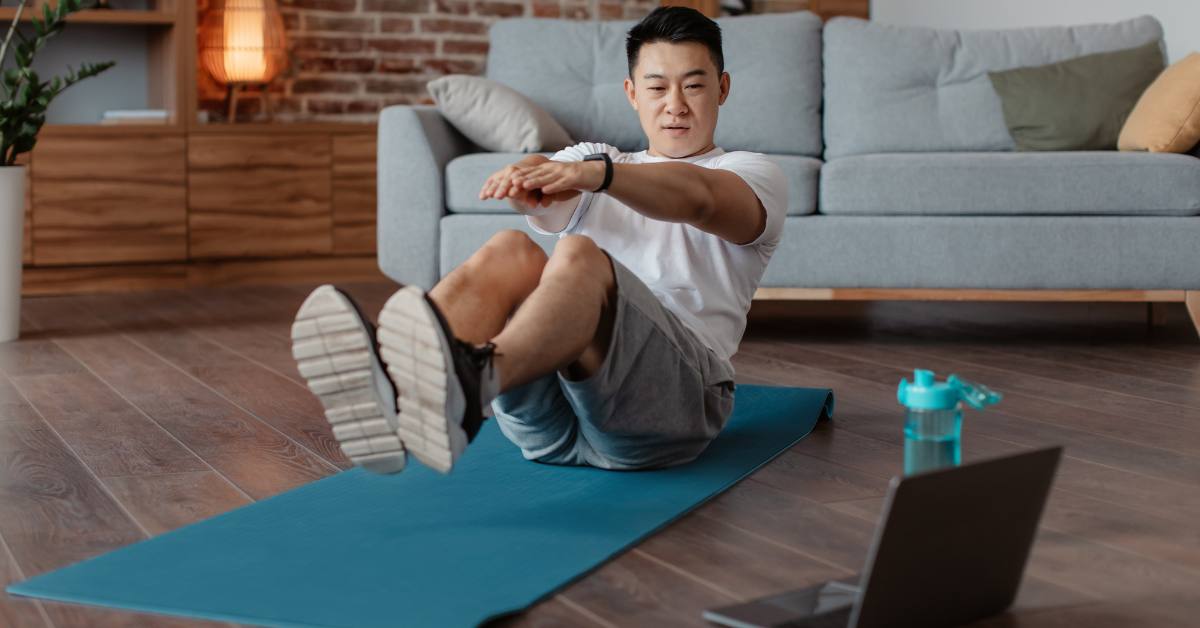Every year, life moves faster and faster, and in many cases, so do expectations to keep up. It’s especially true when it comes to health and wellness trends: people want results, and they want them yesterday.
However, there is value in slowing down and thinking more critically about the world around us and ourselves—not just our interpersonal relationships but our relationships with our mind, body, and health.
As Scientific Director at ParticipACTION, a non-profit organization dedicated to helping people in Canada get more physically active, I regularly see online trends that promise viewers the world at a pace that is often unrealistic, unhealthy, and potentially demotivating.
Intense fitness programs such as CrossFit and High Intensity Interval Training (HIIT) have recently surged thanks to attention-grabbing and enticing promotional content on social media. While these programs can produce great results for some people, many run the risk of experiencing significant injuries and other setbacks, all in the name of achieving a particular aesthetic as quickly as possible.
There’s so much more to physical activity than the size of your muscles or clothes. And there are a lot of great ideas and trends, both on and off social media, that you can use to support your health and wellness journey in 2024.
Physical activity for mental well-being
The 24 Hour Movement Guidelines, Canada’s physical activity recommendations, suggest that adults should strive for 150 minutes of moderate-to-vigorous physical activity each week for optimal health. If that seems like a lot to you, the good news is that it can be broken down however you like. Adding a daily 20-minute walk to your weekday lunch break gives you 100 minutes. Add a 10-minute workout to your morning routine or take your kids ice skating or hiking on a Saturday—the minutes add up faster than you might think!
Of course, changing your routine is not always as easy as it sounds, and the long-term effects of inactivity can add up. A 2017 study found that 51% of people with anxiety or depression do not exercise at least once per week. Research like this has led many doctors and psychologists to prescribe physical activity and time outside to help treat or prevent the onset of depression and anxiety (and/or related symptoms). Humans instinctively move more when outdoors, but also receive the added bonus of being exposed to natural sunlight which can help regulate our body’s sleep-wake cycles.
From improved sleep to regulation of endorphins that affect your mood, physical activity has a key role to play when it comes to promoting mental health.
But seriously, social media for better health?
Chances are you’ve seen some trending health and fitness content on social media platforms. I have to admit, it can be almost impossible to avoid getting sucked in for a few minutes (or more) and watching entertaining reels and videos.
The key word here is entertaining. Taking a couple of minutes for yourself at the end of a long day to check TikTok can be relaxing, so long as you are mindful of your total screen time and power down at least an hour before bed (to minimize stimulation and blue light exposure). It’s important to remember that most of the content on these apps is less about informing and more about entertaining you.
That said, here are some ways you can benefit from the positive impacts of social media on health and fitness trends to support your goals.
Slow and modified

Look for creators or videos that encourage starting slow with their exercises. Some fitness creators may even provide modifications based on ability, injury, or other medical conditions. Also, look for videos where the creator provides clear instructions on performing the activity correctly and safely. If they are certified exercise physiologists, kinesiologists, physiotherapists or personal trainers, you’re more likely to find high-quality programs and evidence-based information.
For those considering getting back into exercise after some time away, the 12-3-30 workout that started on TikTok could be a good place to start.
Whole and diverse foods
If you’re looking for healthy eating tips, the best are the creators who prioritize recipes with colourful whole ingredients (think red peppers, zucchini, eggplant, and carrots in one recipe) and high fibre. Bonus points if you can find a chef or foodie who encourages their audience to stay hydrated by drinking lots of water.
The 15 Minute Meals or cottage cheese trends often include options that are simple to make, high in protein, unlikely to be processed, and nutritious.
Who to avoid
Fitness creators often post extreme or ambitious exercises just to get their audience’s attention. It’s best to see this as entertainment only and not something to try on your own. If the video promotes any type of movement for beginners that is too extreme (for example, working out for 1-2 hours a day and at a vigorous pace), you’ll want to avoid it.
Some creators may even have sponsorship arrangements with gyms or certain supplement companies and stress that you “need” x, y, or z to meet your goals. Remember, you don’t have to change much to feel the benefits of physical activity—-simple and light exercises that you enjoy and can complete consistently are best.
With respect to food, avoid content that labels different foods as “bad” or “toxic” or promotes specific types of rigid or exclusionary diets. Just like physical activity, the best diet is the one you can follow for life, allowing room for the occasional indulgences you enjoy most and fit your budget.
We’re all in this together

One of Canada’s greatest, most significant public health success stories came from taking action as a group. Any guesses as to what it was?
The answer is people smoking less! The significant decline in the number of people in Canada smoking is the direct result of doctors, schools, small businesses, local politicians and many others advocating for smoke-free environments and supports to help people quit smoking.
Did you know that physical inactivity is the 4th leading risk factor for premature death and chronic disease in Canada and globally? While the negative health effects of smoking are obvious, the health consequences of inactivity are not as understood.
Oftentimes, the negative consequences of not moving our bodies aren’t always immediately felt. In fact, the health complications that arise from physical inactivity, such as type 2 diabetes and osteoporosis, can sometimes take decades to impact a person’s life. And it can be very difficult for most people to make a decision in the present in anticipation of their health a few decades in the future.
The best way to get motivated to get active now is to focus on the more immediate positive effects of physical activity. From improved mood to better sleep and less pain in your joints, adding as little as 10-15 minutes of physical activity to your day will have a noticeable positive impact on your health quickly and only accumulate over time.
And just like quitting smoking, working as a group improves your chances of success. Walk your kids to school in the morning and recruit other dads in the neighbourhood to join you. Start or enrol in a workplace wellness program. After all, healthy employees are happier and more productive, and studies show they feel a greater loyalty to their workplace if they feel supported in improving their physical health. The point is: getting active with others not only makes physical activity social and more fun, it also creates an inherent sense of support and accountability.
There’s a lot of health and fitness noise online competing for your attention. Keeping your physical activity and health goals simple, fun, and social are the best ways to build healthier routines that will stick.
What online health trends do you want to try out? Share in the comments below.
Get The Right Tool For The Job
Free mental health resources for men. Manage stress, anxiety and depression with Mindfit Toolkit.





Don’t think I learned anything new, but feel the info I received can never be repeated to much!!
Everyone is at a different stage in their learning journey, so we present our information in a simple and easy to understand way. And you’re right, repetition is key!
~Canadian Men’s Health Foundation team member